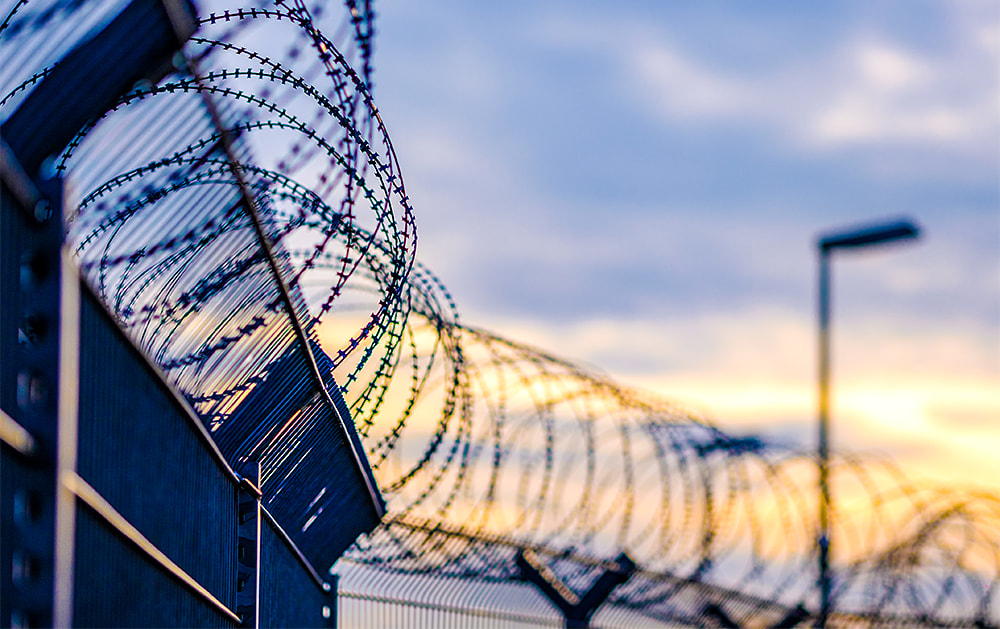Indigenous peoples are statistically overrepresented in Canadian prisons, by about nine times. Justin Tetrualt, ’21 PhD, an assistant professor at the U of A’s Augustana Campus, is undertaking research about the experiences of incarcerated Indigenous peoples with “Indigenized” prison programs. Can they help people heal and connect to their culture? Or do they represent the latest form of colonialism? During a recent Lunch & Learn session he shared his work as a part of the U of A Prison Project. Tetrault and the Prison Project team have interviewed more than 600 incarcerated people about their experiences with cultural programming within the prison system. Here are a few takeaways from the event.
1: Historical Roots
We can explain the higher rates of incarcerated Indigenous Peoples by looking at Canada’s history of colonialism, Tetrault says. “Historical and contemporary policies have compounded to create the problems we face today.” He says the residential schools system and the Sixties Scoop contributed to the separation of Indigenous children from their culture and families. Tetrault says the criminalization of drug use has disproportionately affected people living in poverty and Indigenous communities. These ties between colonialism and the justice system are a large part of why Tetrault is researching cultural programming inside prisons, initiatives that are controversial and understudied. The team wants to find out if this programming supports Indigenous people, or if programming is another kind of colonial harm, as critics suggest.
2: Reconciliation in Action
Those critics say that Indigenized programming represents ongoing cultural genocide and that abolition of the prison system is the only solution to mass incarceration. He argues that reality is more complex than that. “There is a stark difference between what Canada’s academics are saying about programming,” he says, “and what Indigenous-led reports and research are saying.”
With his work, Tetrault aims to start conversations about what is possible when it comes to decolonization. He uses the Truth and Reconciliation Commission’s report and that of the National Inquiry into Missing and Murdered Indigenous Women and Girls as his guides when he thinks abouts decolonial efforts. These reports seek to adapt and improve already existing programs, to give Indigenous groups more autonomy over justice and healing processes. With those aims in mind, Tetrault argues that efforts to decolonize Canada’s prison system must involve cultural support for incarcerated people. Research, he says, should aim to support the material well-being, self-determination or sovereignty of Indigenous Peoples, and academics are not the authority on how best to decolonize prisons.
3: Human Rights Issue
Cultural programming in prisons takes various forms, from classroom learning to religious ceremonies and healing lodges to peer mentorship. There are less formal ways programming can take place, such as staff facilitating and encouraging spirituality and prisoners building informal support groups.
Inconsistent access to Indigenous programming was the main critique of Tetrault’s interviewees, who described barriers such as racist staff members and security restrictions. He found that limited access to support affected incarcerated people’s ability to practice their culture and spirituality, which in turn negatively affected their mental health. For Tetrault, it’s important that people don’t see cultural programming as simply a programming problem, but as an Indigenous rights issue.
4: Born of Resistance
Critics reject that decolonization can happen inside of deeply colonial institutions, such as prisons. But history shows that, “Indigenized prison programs were born of decolonial resistance by Indigenous Peoples,” Tetrault says. “Decolonization always happens in colonial spaces…there is tension between colonial and decolonial spaces.” He adds that cultural programming itself is not enough to address the overrepresentation of Indigenous people in Canada’s prisons. Realizing the potential of these programs requires moving beyond the current retributive system. For Tetrault, centering Indigenous voices and opinions is critical to realizing these goals.
5: A Starting Point
Cultural programming is a good place to start, says Tetrault. But he doesn’t think that’s where it should end.
There is no single, simple solution to the overrepresentation of Indigenous people in prisons. Some solutions are needed urgently, while other decolonial efforts can take more time and aim for more ambitious, structural changes. Indigenous communities have diverse needs, and reconciliation efforts should reflect that, Tetrault says. “Change will happen through listening, acting and collaborating.”
There is nuance and uncertainty to the process. “We can be certain of the harms of colonial policies and racial inequalities. Indigenous struggles are the known part,” says Tetrault. “The future pathways to healing restoration and reclamation are uncertain. That’s the unknown.”
Tetrault’s research is the subject of an upcoming feature article in Augustana’s alumni and community magazine, Circle.

We at New Trail welcome your comments. Robust debate and criticism are encouraged, provided it is respectful. We reserve the right to reject comments, images or links that attack ethnicity, nationality, religion, gender or sexual orientation; that include offensive language, threats, spam; are fraudulent or defamatory; infringe on copyright or trademarks; and that just generally aren’t very nice. Discussion is monitored and violation of these guidelines will result in comments being disabled.